
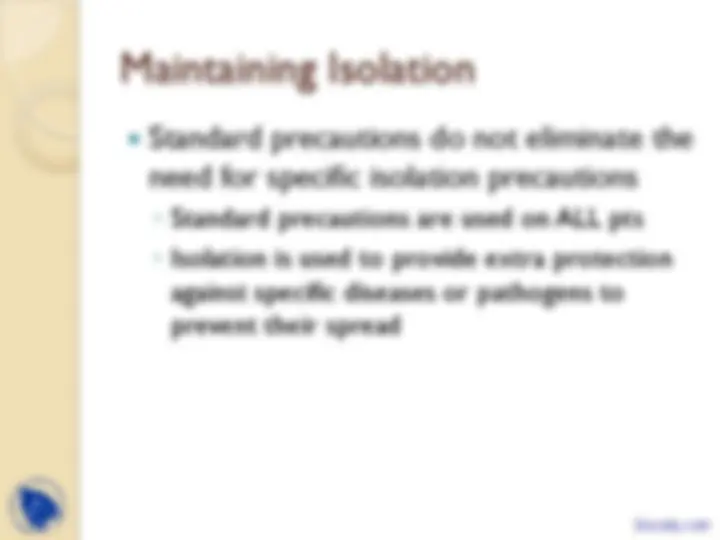
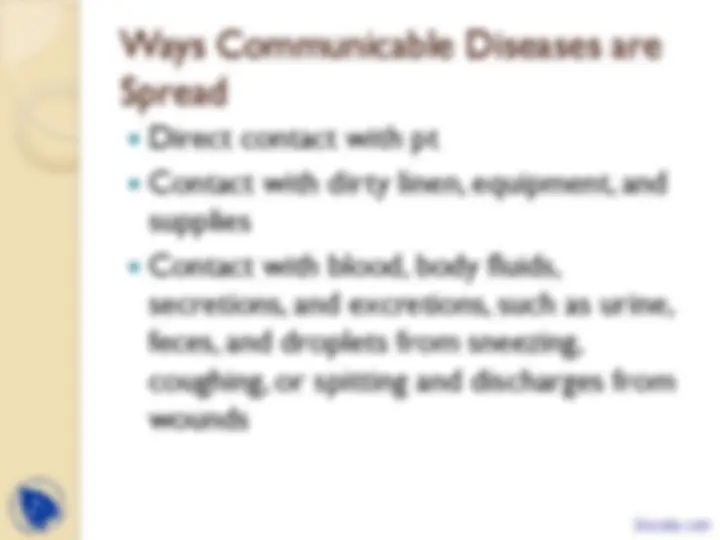
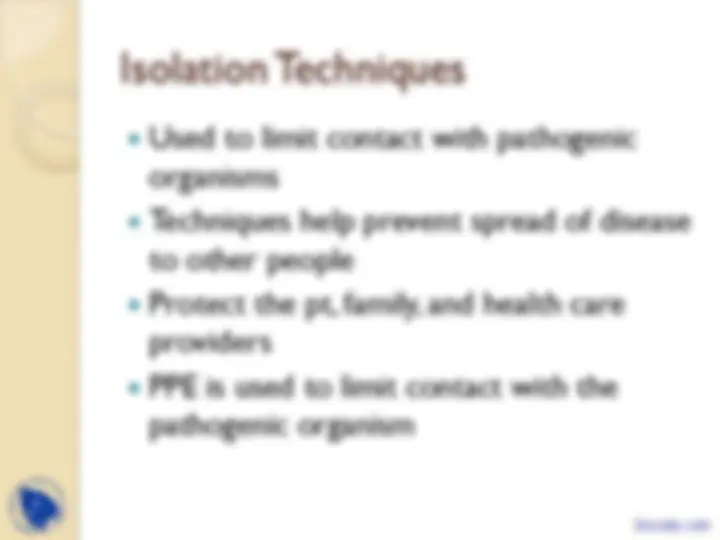
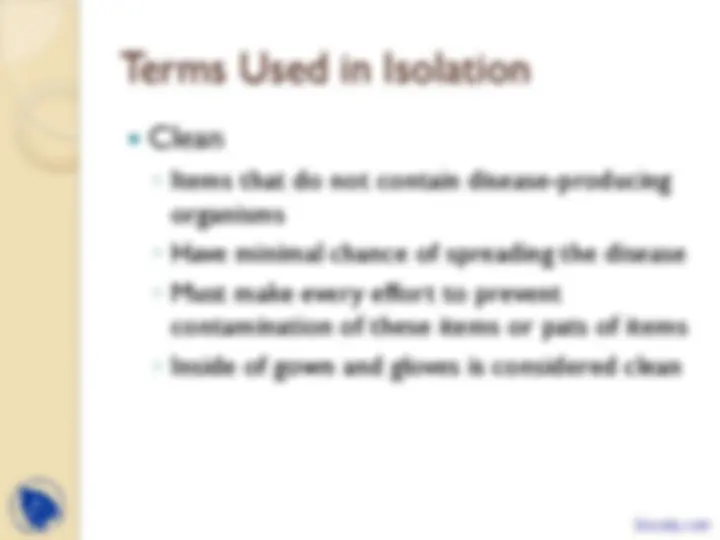
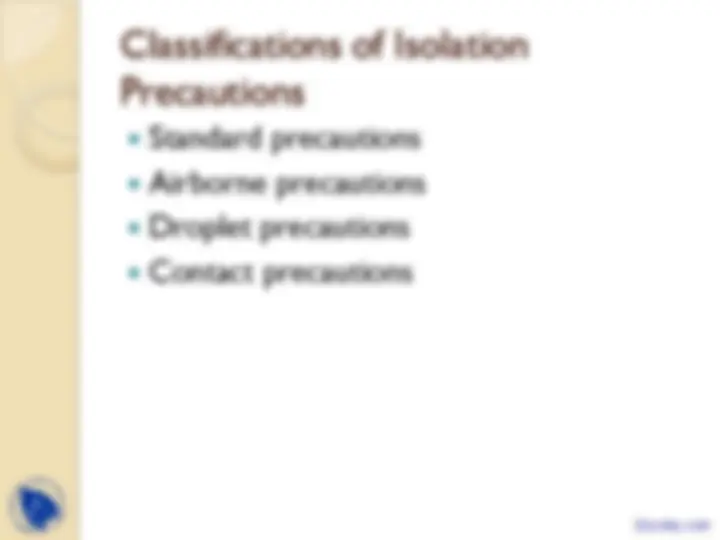
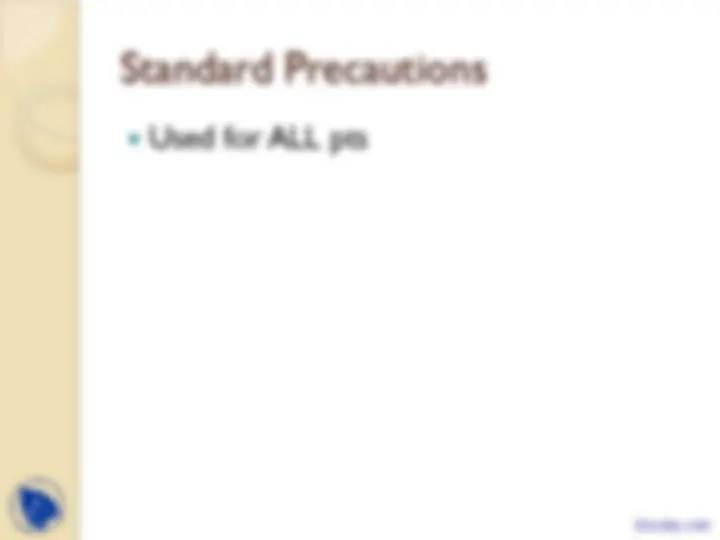
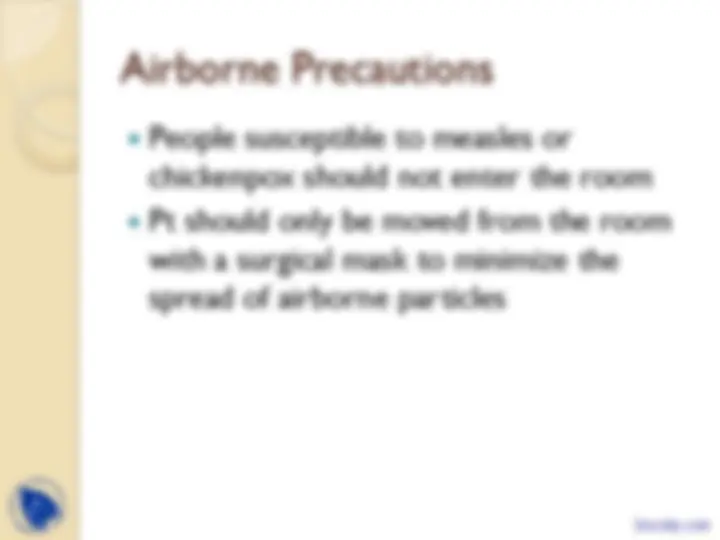
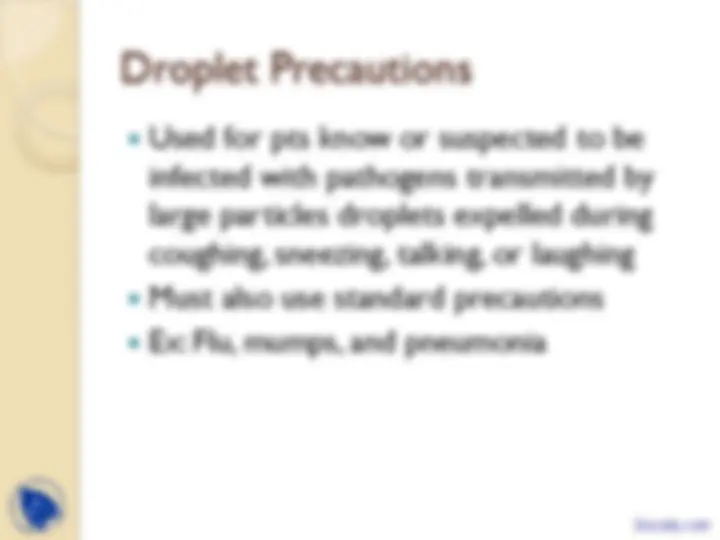
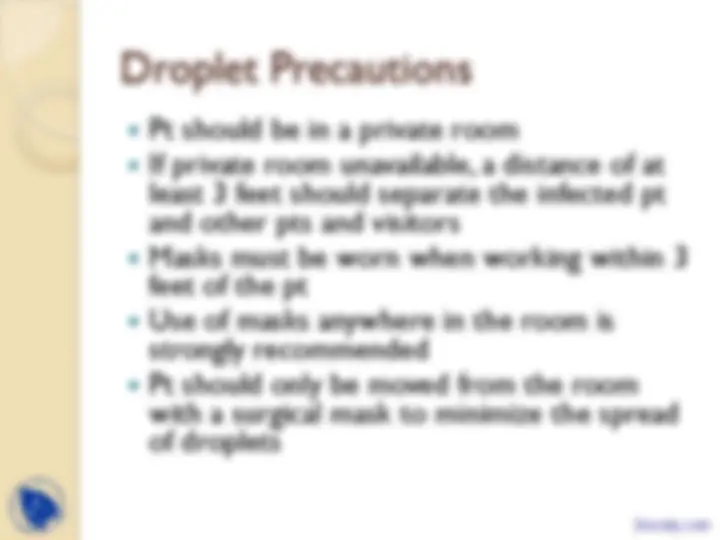
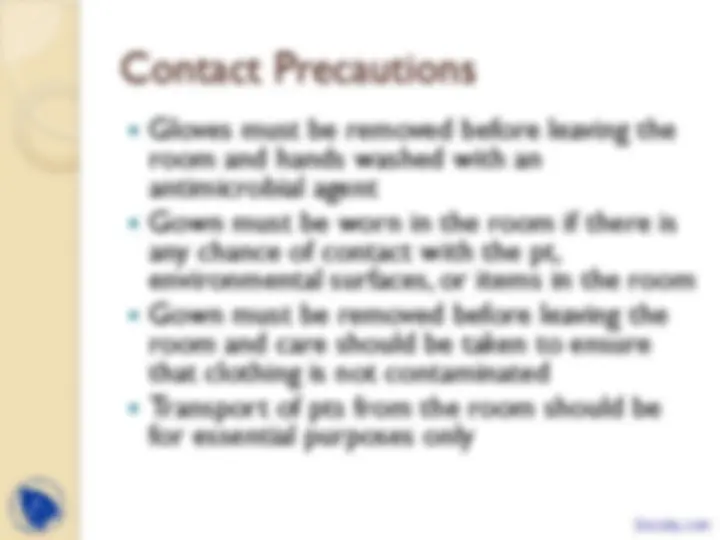
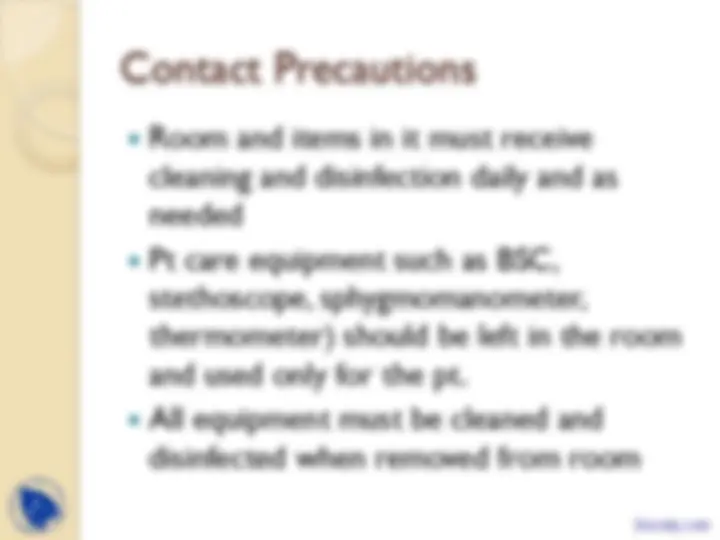
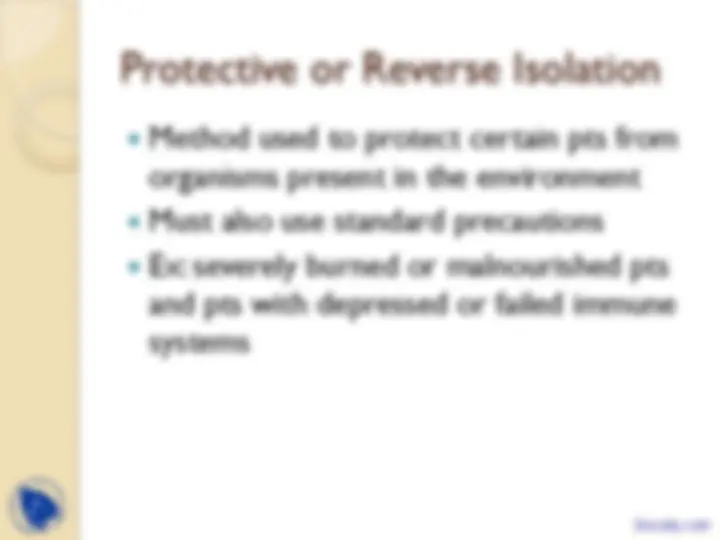
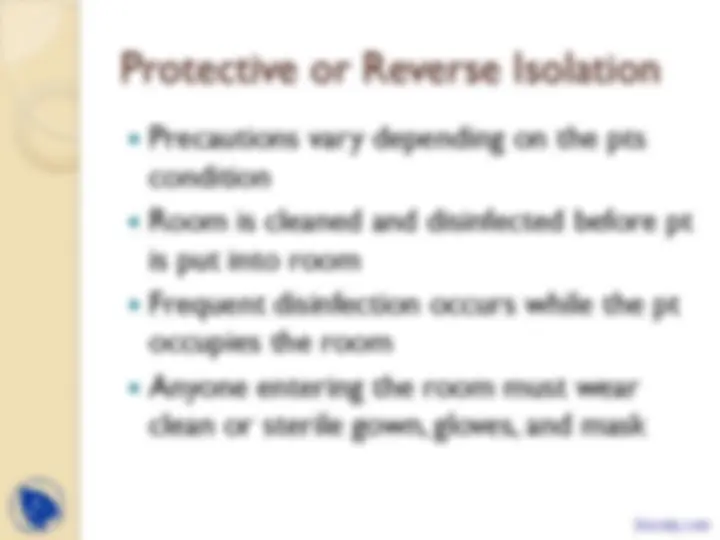
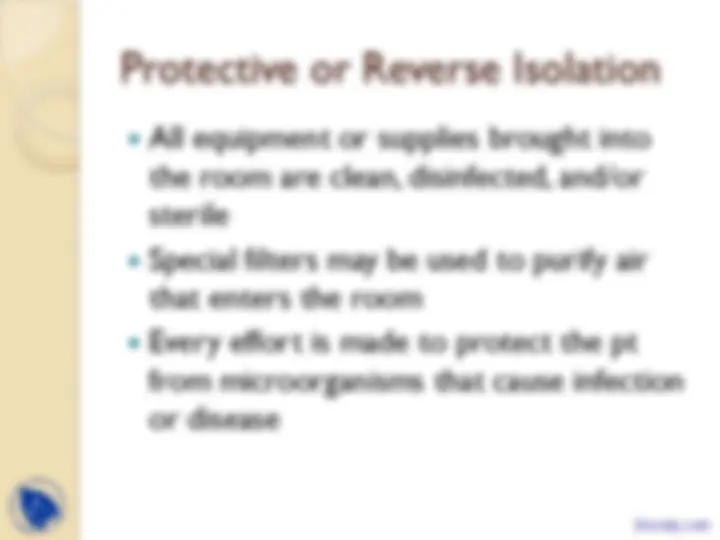


Study with the several resources on Docsity

Earn points by helping other students or get them with a premium plan


Prepare for your exams
Study with the several resources on Docsity

Earn points to download
Earn points by helping other students or get them with a premium plan
Community
Ask the community for help and clear up your study doubts
Discover the best universities in your country according to Docsity users
Free resources
Download our free guides on studying techniques, anxiety management strategies, and thesis advice from Docsity tutors
Applications of Biology is most interesting course. Its specialty is, its interesting fro everyone. This lecture also describes some applications. It includes: Maintaining Isolation, Diseases or Disorders, Diseases are Communicable, Transmitted Easily, Transmission Based Precautions, Technique of Caring, Communicable Diseases, Standard Precautions, Against Specific Diseases or Pathogens, Direct Contact
Typology: Slides
1 / 22

This page cannot be seen from the preview
Don't miss anything!















Health care workers deal with many different diseases or disorders ◦ Some diseases are communicable (caused by an organism that can be transmitted easily) Isolation is required for communicable diseases ◦ Also called transmission-based precautions ◦ Method or technique of caring for pts with communicable diseases
Direct contact with pt Contact with dirty linen, equipment, and supplies Contact with blood, body fluids, secretions, and excretions, such as urine, feces, and droplets from sneezing, coughing, or spitting and discharges from wounds
Used to limit contact with pathogenic organisms Techniques help prevent spread of disease to other people Protect the pt, family, and health care providers PPE is used to limit contact with the pathogenic organism
Contaminated or Dirty ◦ Items that contain disease-producing organisms ◦ Must not be touched unless worker is protected by gloves, gown, etc. ◦ Outside of gown, gloves, and cap become contaminated during pt care
Clean ◦ Items that do not contain disease-producing organisms ◦ Have minimal chance of spreading the disease ◦ Must make every effort to prevent contamination of these items or pats of items ◦ Inside of gown and gloves is considered clean
Used for ALL pts
Used for pts know or suspected to be infected with pathogens transmitted by airborne droplet nuclei (small particles of evaporated droplets that contain microorganisms and remain suspended in the air) Must also use standard precautions Ex: measles, chickenpox and tuberculosis
People susceptible to measles or chickenpox should not enter the room Pt should only be moved from the room with a surgical mask to minimize the spread of airborne particles
Used for pts know or suspected to be infected with pathogens transmitted by large particles droplets expelled during coughing, sneezing, talking, or laughing Must also use standard precautions Ex: Flu, mumps, and pneumonia
Used for pts know or suspected to be infected epidemiologically important microorganisms that can be transmitted by direct contact or indirect contact Must also use standard precautions Ex: C. diff, MRSA, and E. coli
Pt should be in a private room or with a pt who has an active infection with the same organism Gloves must be worn when entering the room Gloves must be changed after having contact with any material that may contain high concentrations of the microorganism, such as wound drainage or fecal material
Room and items in it must receive cleaning and disinfection daily and as needed Pt care equipment such as BSC, stethoscope, sphygmomanometer, thermometer) should be left in the room and used only for the pt. All equipment must be cleaned and disinfected when removed from room
Method used to protect certain pts from organisms present in the environment Must also use standard precautions Ex: severely burned or malnourished pts and pts with depressed or failed immune systems